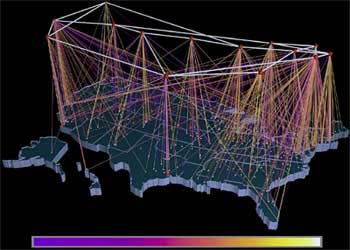

You can expand your cloud-based WAN to include a significant number of branch-sites using Azure Virtual WAN. If you run a global operation, you can use ExpressRoute Global Reach with your preferred and local service providers to connect all your global sites using the Microsoft global network. These options provide bandwidth of up to 100 Gbps directly into Microsoft's global network at peering locations worldwide.ĮxpressRoute Global Reach is designed to complement your service provider's WAN implementation and connect your on-premises sites across the world. Enterprises seeking to connect their datacenter or network to Azure or customers with significant data ingestion or transit needs can choose from options such as ExpressRoute and ExpressRoute Direct. Our family of connectivity services spans virtual network peering between regions, hybrid, and in-cloud point-to-site and site-to-site architectures as well as global IP transit scenarios. Microsoft Azure offers the richest portfolio of services and capabilities, allowing customers to quickly and easily build, expand, and meet networking requirements anywhere.
#Backbone meaning in networking full#
Businesses can take full advantage of our network assets and build advanced overlay architectures on top.

We have put two decades of experience, along with massive investments into the network, to always ensure optimal performance. New Cross Pacific (NCP) between Tokyo, Japan, and Portland, Oregon, USA. The industry's first Open Line System (OLS) over subsea, between Bilbao, Spain and Virginia Beach, Virginia, USA.ĪEC between New York, USA and Dublin, Ireland. Recent additions to our global network are: Massive investments in fiber capacity and diversity across metro, terrestrial, and submarine paths are crucial for us to keep consistent and high service-level while fueling the extreme growth of our cloud and online services. This routing ensures optimal performance and integrity. So, does that mean all traffic when using Microsoft services? Yes, any traffic between data centers, within Microsoft Azure or between Microsoft services such as Virtual Machines, Microsoft 365, XBox, SQL DBs, Storage, and virtual networks routes within our global network and never over the public Internet. Traffic stays on Microsoft network as long as possible before it's handed off. This data travel is referred to as cold-potato routing. This approach ensures symmetric response traffic and helps to minimize hops, peering parties, and paths to keep them as short and simple as possible.įor example, if a user in London accesses a service in Tokyo, the Internet traffic enters one of our edges in London, travels over the Microsoft WAN through France, our Trans-Arabia paths between Europe and India, and then to Japan where the service resides. At Microsoft, we choose and utilize direct interconnects instead of transit-links. Whether connecting from London to Tokyo, or from Washington DC to Los Angeles, latency, jitter, packet loss, and throughput affect network performance. These edge-nodes, all interconnected to more than 4000 unique Internet partners (peers) through thousands of connections in more than 175 locations, provide the foundation of our interconnection strategy. From the moment when customer traffic enters our global network through our strategically placed edge-nodes, your data travels through optimized routes at near the speed of light.

Opting for the best possible experience is easy when you use Microsoft cloud. The Microsoft global network offers both the availability, capacity, and the flexibility to meet any demand. The global network connects our Microsoft data centers across 61 Azure regions with a large mesh of edge-nodes strategically placed around the world. The Microsoft global network (WAN) is a central part of delivering a great cloud experience. Regardless of type, customers expect instant reliability and responsiveness from our services. This global and sophisticated architecture, spanning more than 165,000 miles, connects our datacenters and customers.Įvery day, customers around the world connect and pass trillions of requests to Microsoft Azure, Bing, Dynamics 365, Microsoft 365, XBox, and many others. Microsoft owns and operates one of the largest backbone networks in the world.


 0 kommentar(er)
0 kommentar(er)
